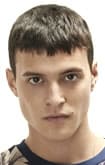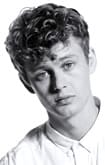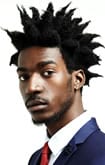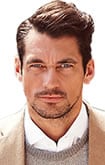Look, we know that training legs is no walk on the treadmill. Unlike biceps, chest, and shoulders, they don’t particularly help you look ‘bigger’. And big legs means skinny jeans are out. Which, on second thoughts, might not be such a bad thing. Oh, and training legs hurts?
Two days of not being able to walk might not be your idea of fun, but trust us, there are huge benefits to be gained from giving your legs a boost. Least of all the fact that you won’t look out of proportion with a beefed-up upper body and twig legs.
With that in mind, we asked a trio of expert leg-day aficionados to teach us how to love leg day, and why it matters so much.
The Experts
- Keith McNiven, founder of personal training company Right Path Fitness
- Frankie Foster is a fitness expert at strength and conditioning hub Gym66
- James Castle-Mason is a trainer at London’s elite gym Roar Fitness
Why Bother With Leg Day?
“Guys often focus on their upper bodies, but legs need just as much attention, unless you like the top heavy with spindly legs look,” says McNiven. “When you have strong legs it provides stability and greater core strength, and actually makes pretty much every daily job and activity you can think of easier.”
Just not the very next day, when the DOMS strke.
“Leg training is probably most people’s least favourite part of the body to work,” adds Castle-Mason. “Let’s be honest, everyone is all too keen to see growth of the arms and chest, but leg day is the one everyone dreads (unless you’re a bit of a sadist).”
If you’re still all about the upper body, then think of it this way: training your legs will help you get a stronger upper body too because you’ll be able to perform the exercises from a stronger base.
Foster, however, argues that legs training is gaining ground. “Leg training has become more popular in recent years and rightly so. ‘How much do you bench?’ is heard less, and people are more interested in what you can squat or how ‘functional’ and explosive you are.”

It’s this functional fitness that is perhaps most important. Rather than thinking about your legs as muscles to be trained in their own right because you want big legs, think of them as a way to complement your training in other areas. They might benefit you in more areas than you realise.
Not only has heavy leg training been associated with increased levels of the growth hormone testosterone (which will help you build muscle all over the body), training your glutes in particular can benefit the sedentary worker. For those who sit at desks all day, tight hip flexors and a weak set of glutes are inevitable unless some sort of training is done to offset this. Tightness and weakness in these areas can lead to chronic lower back pain and posture problems.
And, as Foster explains, training legs can have a huge impact on any sports you might play: “Stronger and more explosive legs are going to improve your performance in most sports as we need to run, jump, and change direction effectively.”

Plus, as well as giving you the lower body of a Kardashian, leg exercises are renowned fat burners due to them being compound movements, roping in some of the biggest muscles in the body. The bigger the muscle, the more energy it needs to perform, thus the more calories it consumes.
The Best Leg Exercises For Strength
“For building strength, power and stability in your legs, work on developing your quads,” advises McNiven. “The quads or quadriceps are made up of four muscles: the vastus lateralis on the outer thigh, the vastus medialis on the inner thigh, and the rectus femoris between the two. The vastus intermedius sits underneath. Developing your quads means squats and lots of them so get in the reps with wall squats, sissy squats and barbell hack squats. And as well as your quads, work on your calves too with some dumbbell calf jumps.”
Wall Squats
Stand with your head and back pressed against a wall. Position your feet shoulder-width apart, and slide your feet in front of your body. Keep your arms at your sides and your back against the wall, and squat until your thighs are parallel to the floor.
Sissy Squats
Ignore the dumb name, this is an advanced leg move. Standing upright, with your feet at shoulder width and toes raised, use one arm to maintain balance while bending at the knees and slowly lowering your torso toward the ground (bending backwards) by bringing your pelvis and knees forward. When your upper and lower legs almost create a 90-degree angle, use your thigh muscles to bring your torso back up to the starting position.
Barbell Hack Squats
Place the barbell on the floor behind you. Step in front of it, feet shoulder-width apart, and reach down and grab the bar with an overhand, shoulder-width grip. Keeping your chest up and back straight, press up through the legs. Then slowly lower the weight back down to the floor. As with all squats, be vigilant not to round your back.
Dumbbell Calf Jumps
Stand up straight while holding a dumbbell in each hand. Jump up and down using just your toes; only bend your knees slightly and don’t let your heels touch the ground.
Romanian Deadlift
Stand up straight with your feet shoulder-width apart while holding a barbell at hip level. Keeping your shoulders back and your knees slightly bent, lower the bar by moving your butt back into a squat as far as you can. Keep the bar close to your body, and return to the starting position by driving the hips forward to stand up tall.
Goblet Squat
Stand up straight while holding a dumbbell up vertically between your palms. Position your feet shoulder-width apart and squat until your upper thighs are parallel to the floor. At the bottom, brush your elbows down the inside of your legs and push your knees out. Press back up and repeat. Not sure what proper form looks like? As always, it’s a good idea to ask a trainer at your local gym, or check out Instagram fitness vids to get a live guide to getting it right. When you’ve got squats and deadlifts down, you might want to mix it up with the back squat, favoured by Foster: “To build strength you can’t go wrong with the king of leg training, the back squat,” he says. “It works all the leg muscles as well as your core. The key here is to stick to low reps of 3-5 per set.”
The Best Leg Exercises For Explosive Power
If you want to be quick and powerful, you need to train that way. “To get explosive power, move your body or any weight you lift as quickly as possible,” advises Foster. “Try plyometrics like box jumps, jump squats, 10m accelerations, and power cleans (just not all in one session, unless you want to collapse in a sweaty mess).”
Box Jumps
Stand up straight with feed shoulder-width apart. From this position jump as hard and as fast as possible straight up and onto the raised surface, such as your gym’s plyometrics boxes or steps. Not an overturned laundry basket.
Jump Squats
Stand up straight with feet shoulder-width apart. Lower yourself into the squat and then explode as forcefully as you can into the jump.
Power Cleans
Begin with the bar on the floor positioned close to your shins. Stand with your feet hip-width apart, reach down and grab the bar with an overhand, shoulder-width grip. Squat down and, keeping your core tight and chest up, pull the bar off the floor by extending your legs, making sure to keep your back flat.
Once the bar is at hip level, fully extend your hips, knees and ankles, while simultaneously shrugging the bar with your shoulders and keeping the bar as close to your body as possible. Quickly drop into a quarter-squat position with your back straight, and hips and knees slightly bent. Drive your elbows forward to rotate them around in the bar and catch the bar in the racked position across the front of your shoulders with your fingertips under the bar. Now stand up. “Keep the reps low so that each one is performed with quality; you don’t want to fatigue when training for power as your reps will get slower,” Foster advises. “Go for maximum effort, quality, and full recovery between sets.”
As for rep ranges, Castle-Mason recommends “anything up to 3 reps at very high intensity thresholds of weight.”
“Power,” he continues, “is all about being able move very heavy loads very efficiently and quickly for short bursts of work – much like a sprinter covers distance extremely quickly but also becomes fatigued quickly. It’s a good idea to support explosive power with speed training – i.e. working as quickly as possible through reps. Try lifting 70% of your 1 rep max, for three sets of three, with 30 seconds rest in between.”
The Best Leg Exercises For Weight Loss
As we touched upon above, working your legs is a great way to shed fat – especially that tricky bit around your stomach. The thinking is, the bigger the muscle, the more calories it scorches. Worth keeping in mind when forcing yourself through another painful set of walking lunges.
To help you stay on track, Foster suggests you choose exercises that burn the most calories over X amount of time or reps. “You want to choose compound exercises such as the back squat, Romanian deadlift, lunges, over isolation exercises such as hamstring curl, calf raise, leg extension,” he says. “In contrast to building strength, when trying to lose fat keep your number of reps per set high – around 10-20.”
Back Squat
Stand up straight under the bar with feet shoulder-width apart. Lower yourself into the squat until your upper thighs are parallel to the floor. Stand up.
Lunges
Stand up straight with your feet hip-width apart and arms at your sides (with or without dumbbells). Step forward with one leg until both knees are bent at a 90 degree angle. Your front upper thigh should be parallel to the ground while your back knee should be almost touching the floor. Come up and repeat on opposite leg.
The Best Leg Exercises For Stability
A good set of wheels does more than help you stand up; it sets you in good stead for just about any activity going (yes, even sitting down). To help you really hone your stability, Foster recommends single leg training, i.e., performing an exercise on one leg. The main benefit is that the imbalance this creates will force you to pull in your abs and other stabilising muscles to stop you toppling over, meaning it’s a great full-body workout.
“Single leg training is great for improving your balance, stability, and core strength!” he enthuses. “Not to mention it’s hard work, and great for building muscle and getting a sweat on. Give Bulgarian split squats or single leg Romanian deadlifts a go and you will know about it the next morning. Single leg exercises are challenging but so worth it!”
Bulgarian Split Squats
Rest one foot on a bench about knee height. Get into a forward lunge position, stepping forward with the other leg until the upper thigh is parallel to the floor and the back knee is almost touching the floor. Push up back to standing.
Single Leg Romanian Deadlifts
Stand up straight with your feet hip-width apart, holding dumbbells or barbell at thigh level. Keeping your back straight, bend at your waist and sit your hips back to lower the bar. Keep the bar close to your shins and lower as far as your flexibility allows. Stand up. Castle-Mason also praises the benefits of taking it one leg at a time: “Many people who try to squat and deadlift do so poorly,” he warns. “Due to the nature of these movements, and how difficult they can be to perform well, it often highlights imbalances between the left and the right side of the body. As an example, normally if a squat is too heavy one of the knees might start to cave in when pushing up from the bottom of the movement. To address instability issues single leg-based work may help, such as a split squat or a single leg deadlift. Single leg movements can be used to bring up a weaker side or force it to better stabilise itself. Personally, I have had a great carry over effect from a single leg Bulgarian split squat to a barbell squat.”
The Best Leg Exercises For Overall Functional Fitness
The best exercises benefit us in every aspect of our physical performance, and leg training – done right – is no exception. “A well-balanced approach to leg training doesn’t mean training hard and heavy and building big legs,” Castle-Mason explains. “You could have a massive squat and huge quads, but if you can’t reach your toes because your hamstrings are far too tight, this could present problems down the line, no matter how strong you are.”
As well as focusing on your leg muscles, it’s also vital to ensure your joints are moving properly. “It’s wise to support your weight training with some mobility and flexibility work,” says Castle-Mason. “That means stretching out, but also moving your hip joint through it’s full range to ensure that you move correctly.” Try, for example, controlled articulated rotations of your hip. “Remember, your hip is a ball and socket joint that flexes, extends, abducts, adducts and rotates,” advises Castle-Mason. “It is wise to ensure you can move your hip well through all motions to maximise leg training efficiency.”
Convinced legs need to play a bigger part in your training plan? Good. Then here’s Castle-Mason with the final word… “Having a good set of pins is a sign of athleticism. Anyone can lie on a bench and push weight, but not everyone can run, jump, squat or power clean some decent weight. Anyone at the top of their game in the fitness world doesn’t skip leg day – right from the fitness influencers you follow on Instagram to professional sports players. So get pushing.”







